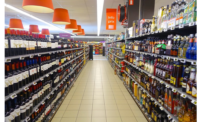Sustainability and Lightweighting Drive PET Packaging Growth

The PET packaging market is forecast to reach 21.2 million tons by 2021, according to a report by Smithers Pira. In 2015, PET packaging amounted to just under 16.7 million tons, representing a 3.8% increase on 2014 levels. Going into 2016, growth was projected to reach 4.8%, amounting to 17.5 million tons. A strong level of new product developments into under-developed markets such as preserved foods, thermoforming, fruit juice and other functional beverages, are projected to boost the market going forward. In addition, further falls in PET resin prices are also projected to benefit the market.
"The Future of PET Packaging to 2021" report forecasts the PET packaging market, over the next five years, to reach 21.1 million tons in 2021, registering an average growth rate of 3.8% per annum during the period 2016-21. Despite various economic issues in recent years, growth has remained relatively consistent. In the key drinks market, consumption is not as responsive to economic fluctuations as non-food and drink products such as cosmetics and toiletries, household care products and pharmaceutical products.
Lightweighting
Some of the key trends in the market include continued lightweighting. Whilst bottles have seen continued gains in lightweighting over many years, it has continued to gain traction with some manufacturers reaching less than 8 grams for a 500ml PET water bottle. The trend towards lightweight products is partially as a result of cost-optimization and helps manufacturers achieve a competitive edge. Lightweighting has had a negative impact on volume growth of PET packaging in recent years, although growth has still been relatively strong at 4.0% per annum over the period 2011-15.
Sustainability
The plastic sector faces strong challenges in regards to sustainability. In some regards, it will always face sustainability issues due to the nature of its production. However, it is the recycling streams and the development of these that will help neutralize such sustainability issues. Recycling rates have been improving gradually in Europe, but consumer behavior is likely to prevent a fully sustainable material.
It is almost impossible for the industry to achieve 100% recycling rates, but a high level of recycling will help combat sustainability issues. Some countries have bottle banks, whereby consumers can bring back the plastic packaging material for a small cash incentive. Whether this can be successfully applied across the world is arguable, but it is likely to provide some form of incentive for some consumers, especially those in less developed markets whereby recycling education is not on par as more the developed markets of North America and Western Europe.
Nevertheless, sustainability will play an increasingly prominent part in the market going forward. Recycling streams are still largely underdeveloped, even in mature markets and do not provide a short-term solution to the sustainability question.
Looking for a reprint of this article?
From high-res PDFs to custom plaques, order your copy today!







